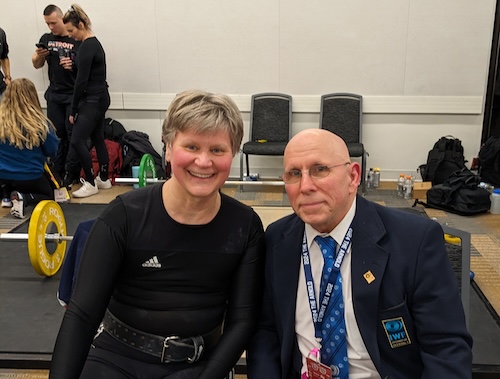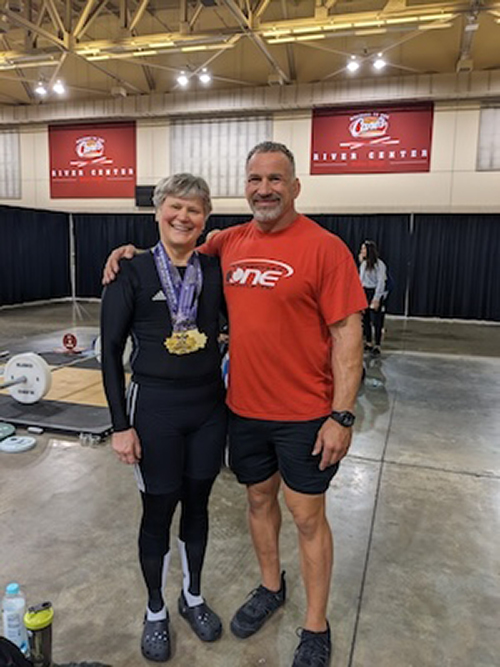The 2024 Paris Olympics will be held July 26 through Aug. 11. While it is easy to identify the fastest runners as they race down the track together, trying to identify the best weightlifter is more challenging. Mainly because not all weightlifters have the same body weight or are the same age and, as a result, they lift varying amounts of weight. So, how do you choose a clear winner?
Marianne Huebner, director of Michigan State University’s Center for Statistical Training and Consulting and professor in the College of Natural Science and the College of Education, is changing how scores are determined in weightlifting competitions both through her research and her experience as an internationally competitive weightlifter.
How are winners determined in Olympic-style weightlifting?
Weightlifting performance is defined as the ‘total’ or ‘two-lift total,’ which is the sum (measured in kilograms) of the best of three snatches and the best of three ‘clean and jerks.’ In the snatch, the weightlifter lifts the weight from the floor to over their head in one continuous movement. The clean and jerk is a two-part movement. First, the weightlifter lifts the weight to their shoulders and then lifts the weight overhead in the second part of the movement. The lifts are judged by three referees and a jury according to the same rules for both sexes and all ages.
Men typically lift more weight than women, and heavier athletes tend to lift more than those who weigh less. While there have been efforts to standardize weightlifting performances across body mass to compare athletes, existing models do not address the sex gap. It is needed!
The International Weightlifting Federation’s (IWF) program of modernization with new types of events such as street weightlifting and mixed team competitions call for new point scores that enable the comparison across body weight, age and sex.
How can statistics be used to compare weightlifting performances between athletes of different weight categories and sexes in a way that fairly reveals who is the best athlete?
Statistical models help describe relationships in data. We can examine how much weight was lifted by each athlete in prior Olympics and World Championships to figure out who the best athlete is. A point-scoring system that helps scale the performances can help athletes and coaches understand their relative rankings or help nations with team selections.
The sex gap is calculated as the percentage difference between male and female performance. Based on world records, the sex gap in weightlifting ranges from 21% in lighter body weight categories to 25% for heavier athletes.
In recent research with Tim Cole at University College London, Huebner developed a novel approach to scale performances by body weight and arrived at a point-scoring system on the same scale for men and women called generalized additive models adjusted for sex, or GAMX, points. This used competition results from IWF World Championships as well as data from the Olympic Games between 2017 and 2023. GAMX points can be used to give awards to mixed teams in competitions.
More generally, one can study the performance development in youth weightlifting and estimate the age of peak performance as well as determine how weightlifting performance declines with age in older athletes.

How has the increase in women weightlifters led to more data and more appropriate comparisons in this sport?
Women’s weightlifting is booming. At the USA National Championships, more than half of the athletes competing are women. There has been an unprecedented increase in women’s participation not seen in other sports to the same extent. In the 1970s, women’s weightlifting didn’t exist and, in the 1990s, women made up only a tiny fraction of Masters competitors.
With more women competing in weightlifting, we have a better idea what performances are possible which helps improve the point-scoring system.
Will you be gathering data from the Paris Olympics for your research? If so, what are you hoping to learn?
The results from the weightlifting competition during the Paris Olympics scheduled for August 7-11 will be used to test the statistical models.
